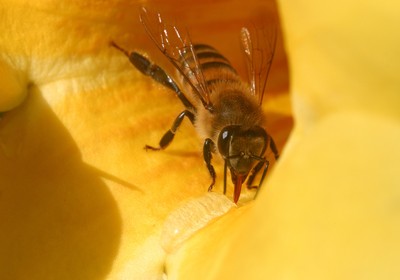GLOBE EDITORIAL BY RURAL

( Study analyzes honey and pollen stingless bees - Photo: Thinkstock )
A survey by the Center for Nuclear Energy in Agriculture (CENA ), USP in Piracicaba ( SP ) that evaluated honey and pollen from 13 species of stingless bees , besides the insects themselves , demonstrated the differences in the chemical composition of each products analyzed , its features and the effect of local origin in their constitutions . For the evaluation , the biologist Andre Luis Lima de Araújo , who led the study , collected samples in 77 hives in five Brazilian states ( Bahia , Minas Gerais , Rio Grande do Norte , Santa Catarina and São Paulo ) . Analyses located 10 different elements in honeys , pollen types in the other 12 and 14 on bees .
" The study of these honeys , combined with the knowledge of pollen and the bees themselves , allowed us a better understanding of the contributions of these products. However , although there is legislation regulating the creations of stingless bees in the regions where they are endemic , it is necessary to create a specific honey bees such legislation, " adds the researcher .
According to the biologist, the results proved the difference in the composition of honeys according to location and species. However , the most positive thing is that elements with toxicological significance were below the maximum set by Brazilian legislation .
The survey also showed that the amount of water present in honeys reviews varied significantly , with only the honey of Apis mellifera showed moisture within the regulated limit , which is 20 % . The level of this in stingless bee honeys humidity ranged between 22-35 % . " The honey of native bees are very different from those of Apis mellifera , which makes it a commercial niche not yet explored . Even more because their production has great potential to add value to sustainable economic Brazilians , especially forest ecosystems , " he says.
Although Brazil have the largest diversity of stingless bees of the world honey production in the country is based on exotic species Apis mellifera , also known as bee- European . However , even being a major producer of that product , the establishment of native species is still little explored in the country .
Given the knowledge available , although awaken some gastronomic and natural medicine interest, the research studied the composition of the product derived from some species of stingless bees , comparing it with the traditional honey bees yellow stripes .
Source : Globo Rural Magazine ( Brazil ) .
Nenhum comentário:
Postar um comentário